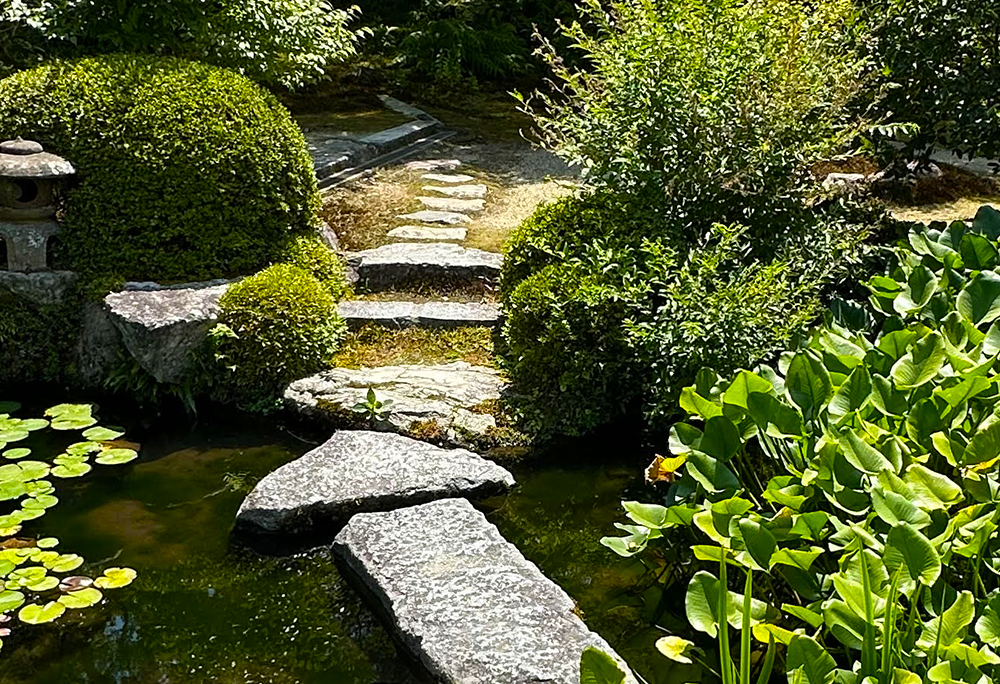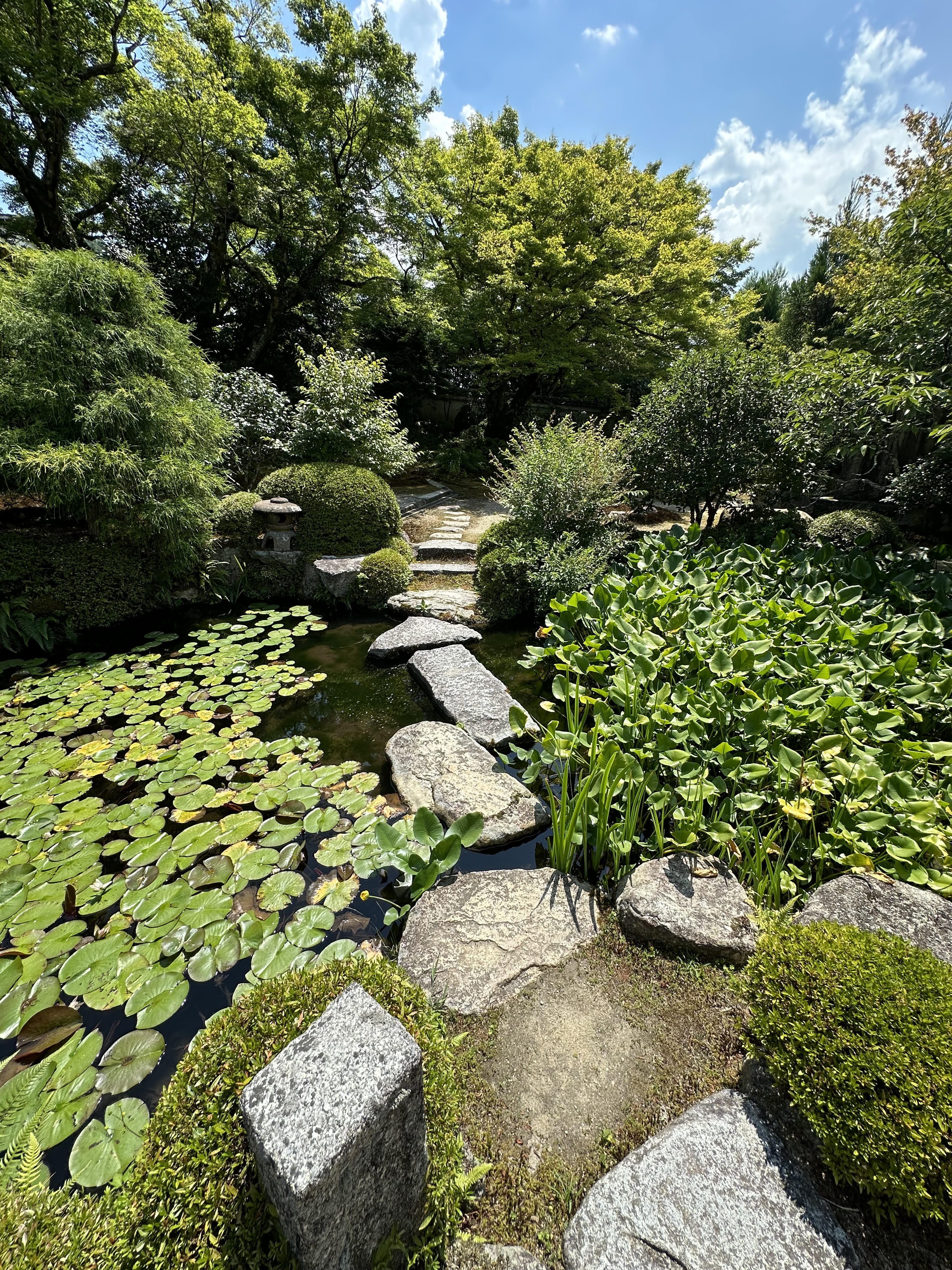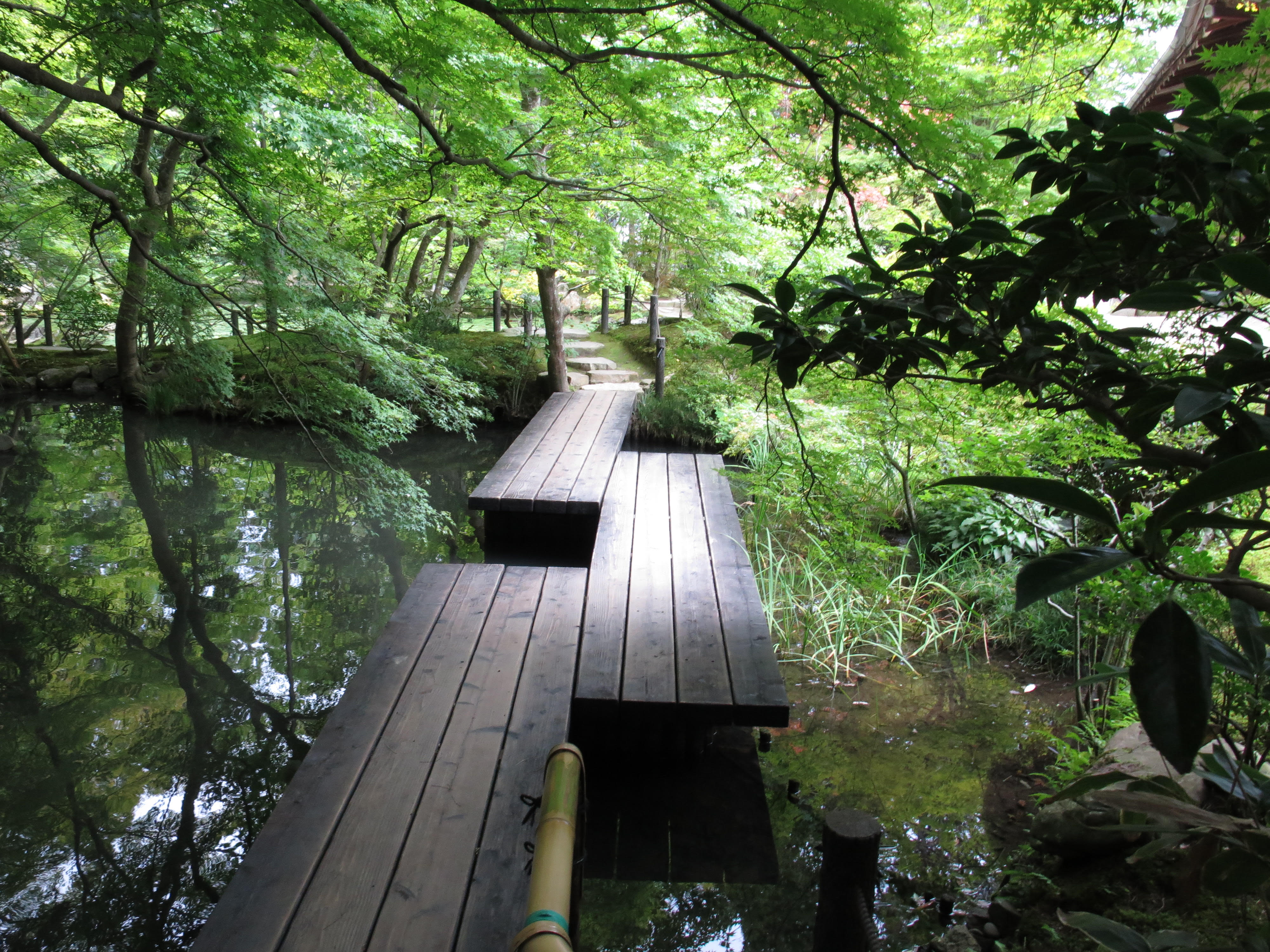The Zen Garden: A Path towards 'Right Mind'
Sophie Walker takes us on a guided tour around the Zen Garden, an experience which can bring the heart to a state of rest
 ©
©
Gardens have long been used by religious practitioners as a tool towards contemplation and the divine – from the Christian monasteries of Europe, the Islamic gardens of the Indian subcontinent, across the schools of Buddhism, and arguably most successfully in the Zen gardens of Japan.
Stepping into the Japanese garden is like entering a place of worship – a temple, a church or a cathedral – a place of great beauty where we are immersed in the overwhelming context of the garden space, a space that assumes an immediate influence on the way in which we behave.
As in the discipline of Zen, where daily life practice demands that we observe our every action, in the Japanese garden, no object, no placement, no action is futile, because, in the spirit of the Buddhadharma, ‘One act, however small, includes all acts’. The Japanese garden sets out to provide us as visitors with the opportunity for a genuine transformation in the way in which we exist in relation to the outside world.
Unlike the recreational spaces of western garden design, with lawns on which we freely walk (and picnic!), the Japanese garden determines how we experience it, carefully directing the way in which we use and navigate its space. While some gardens are designed to be viewed from a distance and do not allow entry, those that can be entered rely on the garden path (roji) to set down this experience. Much like music in which the tune carries us through the piece, the path leads us on a carefully choreographed journey through the garden. Stepping stone paths may quite literally ‘point’ the way, like the arrow path at the temple of Jikkō-in in Kyoto; or the uneven, winding path of the Japanese tea garden which forces us into a state of heightened attention, or the wider meandering path of the ‘stroll’ or ‘paradise’ garden, which guides the visitor around a pond or a lake, a style which American architect Frank Lloyd Wright referred to as the ‘go-round style’ of garden.

The path is a powerful tool that aligns itself with the notion of the Buddhist Path, setting out a physical journey, a religious experience and a poetic way of seeing. Our journey along the path strictly determines what is revealed, how and when. The path is punctuated by gateways, bridges, lanterns, fences and wash basins, which all serve to define specific moments that the garden maker has set out in order to establish our experience. The Japanese garden is not passive but active and directive, even chronological, like the words of a poem set down in order – a carefully crafted means towards a particular understanding, which is most often religious, poetic and literary. On our garden journey, our experience is gradually extended and built upon, developing through a series of thresholds which are paced to reveal a passage.
On entering the garden, we may be required to replace our shoes with garden slippers – a self-ordering act to be tidily carried out with both bodily and mindful respect and humility – (samurai would once have downed swords and removed their clunky armour at the gate). This act serves to remind us to engage the body, to formally order ourselves as we would upon entering a temple, for the garden is a practice in a way of being. To walk carefully along the garden path requires focus and attention; as the Zen saying reminds us, “Look where you’re going! Watch where you step!” The path determines not simply that we walk but how we walk, the heart/mind with which we walk. We must come as pilgrims to the garden, for its effect is rooted in the performative, ritualistic aspects of religious practice - an aid towards wholeheartedness: “Leave yourself at the garden gate”, the saying goes - such is the Garden Way, for the garden is designed to draw us towards the heart of contemplation, towards self-illumination.

Japanese culture embraces a multitude of shugyo, or ‘Ways’ - dedicated, sustained life-practices that may involve the practice of an art or religious pursuit. These include the Buddha Way, the Buddhist Noble Path, the Middle Way, the Tao (‘way’ or ‘path’), Shinto (the Path of the Gods), Chado (the Way of Tea), even Judo (the Gentle Way). With attention and cultivation, these practices may prove transformative in their ability to enable deeper understanding and connection. In Buddhist practice, it is the ‘way-seeking heart/mind’ of zazen (seated meditation) that must be cultivated. In Japan, the garden is so closely connected to the temple because it appeals to this very heart/mind, offering a first stage towards meditation. The way in which we come to the garden matters: our method, our principle and our doctrine matters. By behaving in the right way with right heart/right mind, it is possible to become uplifted above ordinary thoughts, to come closer to the Buddhist ideal of ‘beyond mind’. The rhythm of the Garden Way requires mindful abandon towards an entire way of being; it requires the wholehearted heart/mind of one who enters the deep forest with no thought of return. “Do not follow in the footsteps of the ancients; seek what they sought!”, declared the hermit Zen monk and poet Matsuo Bashō. To walk in the right way brings history and humility: be humble and you remain entire. Through the practice of the Dharma, The Way of the Awakened One, the Buddha made it possible for others to share his Enlightened path: “Do what I do, see what I am, and you in time will be what I am”.
Sophie Walker is the author of The Japanese Garden, Phaidon




